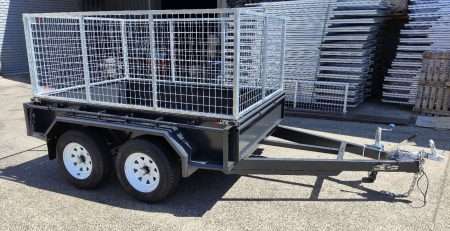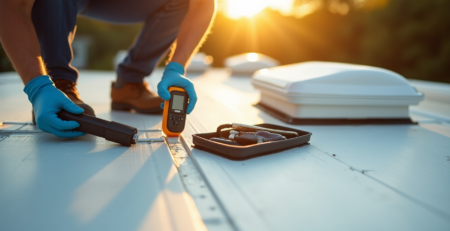Say Goodbye to Overheating: Essential Engine Cooling System Parts
Understanding engine cooling systems
Maintaining the right temperature is crucial for the performance and longevity of an engine. That’s where the engine cooling system comes into play. Made up of various parts that function in unison, it’s an important aspect of your vehicle that can’t be neglected.
Role of Engine Cooling Systems
The primary role of engine cooling systems is to regulate the temperature of the engine and prevent it from overheating. The system is mainly comprised of a radiator, fan, thermostat, water pump, and a series of hoses. These engine cooling system parts work together to circulate coolant through the engine, absorbing heat and reducing its operating temperature (Autotyme).
The thermostat helps to maintain the optimal engine operating temperature by controlling the flow of coolant based on the engine’s temperature (Caltech). The water pump circulates the coolant through the system, ensuring that it flows through the engine, absorbs heat, and then moves to the radiator to be cooled before returning to the engine. The radiator plays a crucial role in cooling the coolant as it passes through, releasing the absorbed heat to the surrounding air (Caltech).
Signs of Cooling System Trouble
Being aware of the signs of trouble with your automotive engine cooling system can save you from costly repairs down the line. Here are some common symptoms to look out for:
Rising temperature gauge: If the temperature gauge on your dashboard is constantly rising into the red zone, this could be a sign of a cooling system issue and should be addressed immediately.
White smoke from under the hood: White smoke coming from under the hood is a clear indication that your engine is overheating. If this happens, you should shut off your engine immediately.
White exhaust smoke from the tailpipe: This could mean that your car is burning up coolant inside the combustion chamber, indicating a serious issue with your cooling system (Autotyme).
Visible coolant leak: If you notice a pool of coolant under your vehicle, this is an obvious sign of a coolant leak and needs to be addressed immediately. You might be in need of an engine coolant leak repair.
Identifying these issues early on can prevent severe damage to your engine and ensure that your vehicle stays on the road. Always remember that proper care and maintenance of your engine cooling system are integral to the health of your vehicle.
Exploring key components
When discussing engine cooling system parts, there are three central components that keep your engine from overheating: the radiator, the water pump, and the thermostat. Each of these parts plays a crucial role in temperature regulation, contributing to the efficiency and longevity of your vehicle’s engine.
The Radiator
The radiator is a pivotal component in your vehicle’s engine cooling system. It’s composed of a series of small tubes and a large surface area of fins that help dissipate heat. As the coolant, a fluid designed to cool the engine, flows through these tubes, it releases the heat it has absorbed from the engine into the surrounding air. This process is vital to keeping your engine cool and preventing it from overheating.
The water pump
Just as the heart circulates blood throughout the body, the water pump circulates coolant throughout the engine and radiator. This component sends the coolant back to the cylinder block, heater core, and cylinder head after it has cooled in the radiator. A belt or an impeller typically drives it, ensuring a steady flow of coolant throughout the engine of your car.
The Thermostat
The thermostat in your vehicle acts as a valve for the coolant. It only allows the coolant to pass through the radiator when the engine’s temperature has exceeded a certain level. Inside the thermostat is paraffin wax, which expands at a specific temperature, triggering the thermostat to open. This expansion and contraction process helps to regulate the normal operating temperature of the engine, ensuring it does not overheat.
Understanding these key components and their roles can help identify potential issues and carry out appropriate maintenance tasks. For instance, if the thermostat is malfunctioning, it may not open on time, causing the engine to overheat. In such a case, an engine thermostat replacement may be necessary. Similarly, if the coolant isn’t circulating properly, it could indicate a problem with the water pump, necessitating a closer inspection and potential repair or replacement.
The Role of Hoses in Cooling
While not the most glamorous of parts, hoses play an integral role in a vehicle’s cooling system. These rubber or silicone conduits are essential for the proper functioning of the automotive engine cooling system, facilitating the flow of coolant between the different engine cooling system components.
Connecting the system
Hoses serve as the connective tissue of the cooling system, allowing coolant to flow between the different parts of the system. They are responsible for transporting the coolant from the engine to the radiator and back, ensuring a continuous flow of coolant throughout the system (Caltech). This circulation of coolant is crucial to prevent overheating, allowing the engine to maintain an optimal operating temperature.
In addition to the radiator and the engine, hoses also connect to other components of the cooling system, such as the thermostat, freeze plugs, timing head/cover gaskets, and the radiator overflow tank (Idolz). This network of hoses ensures that all parts of the cooling system are linked and working in harmony, providing your engine with the cooling it needs to perform efficiently.
Material and Durability
Hoses are typically made of rubber or silicone and are designed to withstand high temperatures and pressures. Some hoses may even be reinforced with fabric or metal to enhance their durability (CarParts.com). This is necessary to endure the heat of the coolant and the pressure within the system, especially when the engine is working hard.
Although these hoses are designed for durability, they are not invincible. Over time, the heat and pressure can lead to wear and tear, causing the hoses to crack, leak, or burst. This is why it’s important to regularly check your hoses for any signs of damage and replace them as needed. A damaged hose can lead to an engine coolant leak, which can cause serious damage to your engine if left unchecked.
Regular maintenance and timely replacement of your hoses are key to keeping your engine cool and running efficiently. For more information on maintaining your cooling system, check out our article on engine cooling system repair.
Potential Issues and Maintenance
Ensuring the proper functioning of the automotive engine cooling system is crucial for the overall health of your vehicle. This section will discuss the importance of regular check-ups and the potential consequences of system failure.
Importance of Regular Check-Ups
Regular check-ups and maintenance of engine cooling system parts are essential to prevent overheating and potential damage to the vehicle’s engine. During these check-ups, parts like the radiator, water pump, thermostat, and hoses are thoroughly inspected for any signs of wear and tear or damage.
One of the first signs of trouble with the cooling system is the temperature gauge on the dashboard rising into the red zone. This could indicate a problem with the thermostat, which regulates the flow of coolant based on the engine temperature.
White smoke coming out from under the hood is a sign that the engine is currently overheating and needs to be shut off. Other signs of trouble include white exhaust smoke being emitted from the tailpipe, often indicating that the car is burning up coolant inside the combustion chamber, and a visible coolant leak underneath the front of the vehicle.
In cases of such symptoms, it’s crucial to schedule an engine cooling system repair immediately to prevent further damage.
Consequences of System Failure
Failure of the cooling system or any component of it can lead to many serious issues, including overheating, which can cause cylinder head gaskets to explode and engine blocks to crack.
Specifically, if the water pump fails, the engine can overheat, leading to serious damage such as a blown head gasket, a warped cylinder head, or even engine failure. Symptoms of a failing water pump include coolant leaks, engine overheating, whining or squealing noises from the engine, and steam coming from the radiator.
To avoid such severe consequences of system failure, it is advisable to regularly maintain your vehicle’s cooling system, including timely engine coolant replacement and engine coolant flush.
Remember, a well-maintained cooling system is integral to the overall performance and lifespan of your vehicle. Regular check-ups, timely repairs, and replacement of worn-out automotive engine parts can significantly prevent potential system failures and costly repairs.
Optimising cooling system performance
When it comes to maintaining your vehicle’s performance, the health of your engine cooling system is paramount. Regular maintenance and choosing quality replacement parts are key factors in ensuring your system performs optimally.
Selecting Quality Replacement Parts
The main components of a cooling system include the radiator, water pump, thermostat, hoses, and coolant (CarParts.com). Each component plays a crucial role in regulating the engine temperature and preventing overheating. Selecting quality automotive engine cooling system parts is essential for the overall health and longevity of the system.
When it comes to purchasing replacement parts, always opt for high-quality options. These parts may be slightly more expensive, but they are designed to last longer and perform better, saving you money in the long run.
For instance, the water pump is responsible for circulating coolant through the engine and radiator, helping to maintain a consistent flow. Typically, a belt or impeller drives it. When replacing the water pump, opt for a part that is robust and designed for your specific vehicle model.
Similarly, the thermostat is a valve that regulates the flow of coolant based on the engine temperature (CarParts.com). Opt for a quality thermostat that responds accurately to temperature changes to ensure optimal coolant flow.
Professional Installation and Care
Professional installation of engine cooling system parts is always recommended. Trained technicians have the knowledge and skills to correctly install these components, ensuring they function as intended.
In addition to professional installation, regular maintenance is crucial. This includes checking and replacing the water pump as needed, which is essential for the overall health of the cooling system.
Regular check-ups can also help identify potential issues before they become major problems. For instance, spotting an engine coolant leak early can prevent damage to the engine and other components.
In conclusion, optimising your car’s cooling system performance involves selecting quality replacement parts, having them professionally installed, and maintaining regular check-ups. By following these steps, you’ll be well on your way to keeping your cooling system and your vehicle running smoothly.
Author
I am Rahatul Ashiq Tamal. Another author of Muscle Trailers. Muscle Trailers is a well-known trailer brand in Sydney, Melbourne & Adelaide

How to Mount a Spare Tire on Your Trailer: A Simple Step-by-Step Guide
Trailer service centers receive over 1 million phone calls and 1.3 million emails each year about trailer maintenance problems....

How to Fix RV Roof Leaks: Simple Roof Leak Detection Guide for Beginners
Did you know DIY RV roof repairs can cost under $50? But undetected leaks could lead to substantially higher repair...

Starting a Food Truck Business in Australia: From Trailer Selection to Launch
The Australian mobile food market has evolved into a billion-dollar industry. This makes a food truck...
